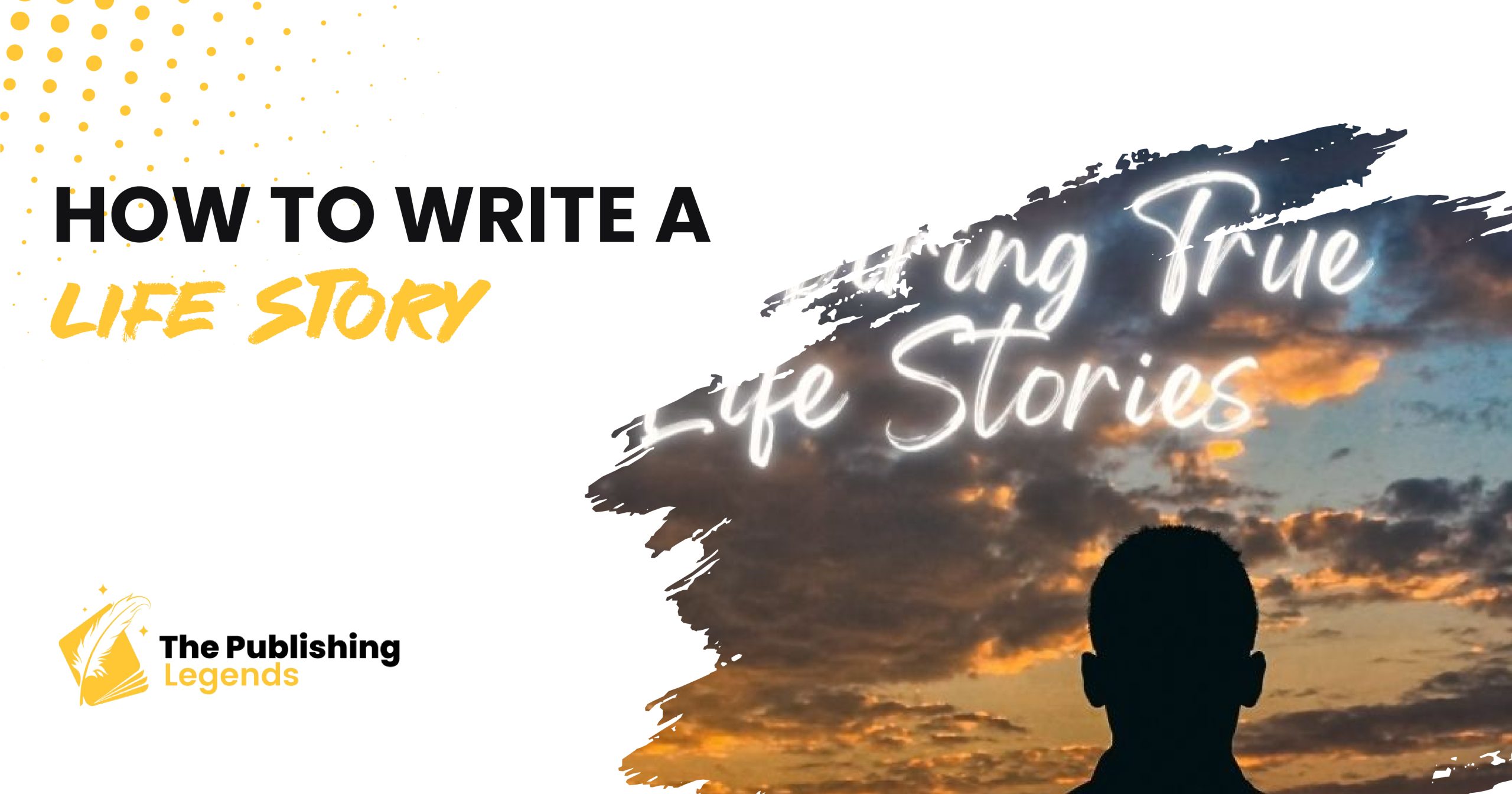Everyone has a story to tell. Life is a collection of events people feel, encounter, and accomplish, making the individual who he or she is. Learning how to write your life story is more than just recording your past; it is about understanding your purpose and narrating it to the world.
If you are writing a memoir, a personal essay for publication, or just telling your own story for your own sake, this guide will assist you in writing your story about your own life.
Understand Your Purpose
It is important to pause briefly before writing and consider why you want to create your life narrative. Save your family history for the next generations. Find ways to help them recover from past events or change their negative perceptions of themselves. Listening skills? take time to understand why you want to write your life story. Are you aiming to?
• Preserve your legacy for future generations.
• Heal and process past experiences?
• Inspire and motivate others?
• Share lessons learned?
Determine what message you want to convey because it will define the style and direction of your story. It also gives your target audience the right expectation about the content of your story – joyful, sad, or both.
Decide on the Scope and Style
A life story does not have to fully account for the years, months, weeks, days, or hours from the beginning of one’s life to the present. Instead, focus on key aspects:
Decide on the area of focus you want your story to be based on, whether it is courage, love, or transformation. Use those several time frames in which change was most dramatic, for example, childhood, a critical moment in a career, or a particularly transformative experience. Apart from this, ensure you use examples that relate to your theme or purpose of the presentation.
Determine what storytelling order you will use, whether ordinary, where you go from one event to another, a non-sequential order, or even introduce dialogue or flashbacks. Gently, if you are unsure, try out the various styles that feel most comfortable to you.
Brainstorm and Organize Your Ideas
Start by jotting down key events, people, and emotions that stand out in your memory. Consider creating:
- A timeline of major life events to establish a structure.
- A list of key characters who influenced your life.
- A list of turning points that shaped who you are today.
It will help you lay a platform for building your story because a story will follow if you arrange your ideas well. You can also use the techniques of creating mind maps or journaling to get deeper into personal memories and find connections between phenomena and events that seem unrelated at first glance.
Understanding how to write your life story involves organizing your experiences in a way that not only engages readers but also reflects the essence of your journey.
Perfect Your Manuscript with expert editing for a polished finish.
Identify Your Audience
Who is going to read your story? Is it a personal diary to share with your family only, a biography book for anybody interested, or an exercise for you? It simply means that what you write, how you write, and the extent of your writing should correspond to your target group.
For instance, personal experiences and close details must be considered if they concern your family. For publication, emphasize the elements of general interest and an exciting plot. When engaging in reflective processes, one has to be real. Adapting the story means making it personal to reach out to people and meet its aim or goal.
Start with a Powerful Opening
It is essential to make the first statement and the initial paragraph persuasive. Start with an anecdote, a question, or an assertion related to your subject, or an appealing or emotional scene that will capture the audience’s attention.
For instance: “I never believed that the routine walk to the nearby store would foretell a turnaround in my whole life.” When beginning your paper, you need to engage the reader and make him or her read on.
Show, Don’t Just Tell
It’s important to paint a picture of your story and use emotions and examples to teach your reader about what is happening. Instead of saying, “I was nervous,” describe the experience: “I was sweating, even my hand; my heart pounded as I was about to step onto the platform.”
This approach makes the reader feel part of what you are coming through, making your story closer to real life. This is basic when writing and shows the reader more depth when writing in the first person because the reader gets not only a description but also a comparison, for example:
Be Honest and Vulnerable
Authenticity is now what drives readers, so it is important to be genuine. Celebrate success, but do not hide the failures. When a person is exposed to this vulnerability, they feel closer to you and trust you; hence, the readers will feel for the journey that you are taking.
Even though it may be easier to skip over uncomfortable details, these parts are the most relevant in the big picture. They reveal your vulnerability and offer important teaching points for your audience.
Incorporate Reflection and Insight
Don’t just recount events—reflect on them. What did you learn? How did they shape your values, beliefs, or perspective? Reflection adds depth and meaning, helping readers understand what happened and why it matters.
For example, instead of simply stating, “I lost my job,” delve into how the experience affected your confidence, relationships, and outlook on life. What steps did you take to rebuild, and how did it change you?
Use Dialogue and Voices
Recreate conversations and capture the voices of key people in your life. This will make your narrative dynamic and engaging. Use dialogue, but make it realistic and brief and confine it to the spirit of what has been said.
This makes our work continue smoothly without having to read through long stretches of different texts. It also helps to expose something about the characters in the play. Intervals can be used to focus on important events or, finally, to show connections.
Edit Ruthlessly
Your first draft is just the beginning. Once you’ve written your story, take time to:
- Cut out unnecessary details and tangents.
- Ensure each scene supports your theme or purpose.
- Check for consistency in tone, style, and structure.
Consider seeking feedback from trusted friends, family, or professional editors to refine your work. Taking a break between drafts can also provide a fresh perspective and help you spot areas for improvement.
Refine Your Story with our comprehensive editing services and make every word count.
Protect Privacy and Maintain Integrity
If developing an article where people are involved, especially by posting the information on media forums, ensure that the names are changed or some info is concealed. Those people must consent to be depicted in public domains, and though the truth should be told, it should probably not be said with even more detail than is painful or otherwise upsetting for some.
Ethical and respect consciousness in your story means being aware of how your story impacts the receivers. This should especially be the case regarding scandals and controversies.
End with an Impact
Sharing our history is very personal, but it is also very rewarding. It is an opportunity to honor yourself, your process, and your journey and then design the story you have or the story you wish to leave on this earth. If you follow these steps and accept the process, you will develop a great message and be able to make them remember—an exceptional story that only you can tell.
Then, Grab your quill switch on your computer and begin to write. To the gay community, you have a right to your story. So, please understand this as perfect – in fact, it is about as realistic as humanely possible and as intimate as one can be with another person. The story that you’ve undergone may become the story of joy, support, and hope for people with similar paths.
Learning how to write your life story is about more than just words—it’s about leaving a legacy that resonates.
Final Thoughts
Telling our story is a very personal process that is also very fulfilling. It is a chance to celebrate you, your journey, and your story and then create the story or legacy you want to leave behind. Following these steps and accepting the process will help you create a great message and make it memorable—an excellent story only you can tell.
So, take your quill, turn on your computer, and start typing. You have a right to tell your story. Please don’t mistake this for perfection – it’s about as real as possible and as close to the other person. The story you’ve been through may become a source of joy, support, and hope for people with similar paths.
Publish Your Book Professionally and share your unique story with the world.




